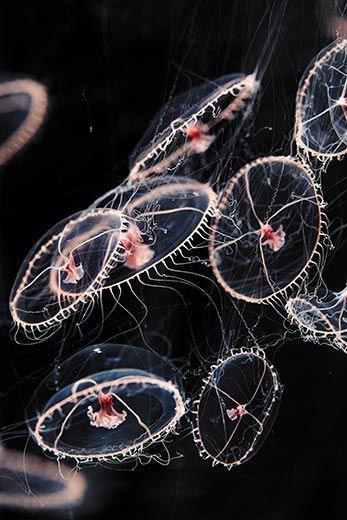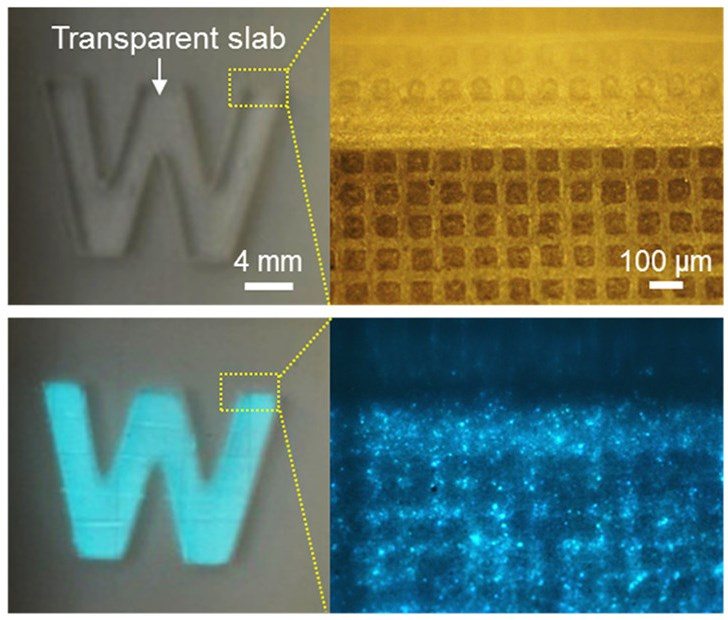Jellyfish-Inspired Robotic Skin Senses Pain, Expresses It by Glowing
Advances in the development and sophistication of prosthetics are numerous. Researchers continue, however, to work on sensory needs: how to make an artificial limb feel objects and allow a user to react to touch.
Now, a team of Huazhong University researchers has developed a jellyfish-inspired electronic skin that glows when the pressure against it is high enough to potentially cause an injury.

To address this shortcoming, Bin Hu and colleagues at the Huazhong University of Science and Technology turned to the Atolla jellyfish for inspiration. This bioluminescent, deep-sea creature can feel changes in environmental pressure and flashes dramatically when it senses danger.
This artificial jellyfish skin is different. Apart from detecting pressure, it uses pain receptors to measure the changes in the intensity of the touch. Also, since it doesn’t lack sensitivity, it becomes more resistant to deterioration. This
is a great technology to make robots more lifelike prosthetics more like a natural limb.Building on the idea of a visual warning in response to a physical threat, the researchers combined electric and optical systems in a novel electronic skin to detect both slight and high-force pressures. They embedded two layers of stretchy, poly-dimethylsiloxane, or PDMS, a film with silver nanowires. These layers produce an electrical signal in response to slight pressures, such as those created by a breeze or contact with a leaf. Sandwiched in between the silver nanowire electrodes is a PDMS layer embedded with phosphors. This layer kicks in and glows with growing intensity as the physical force increases. The researchers say this approach more closely copies the wide range of pressures the human skin can feel.

The high pressures registered by the phosphors are around the levels that become painful to humans, meaning the luminescent material can play the role of pain sensors found in real human skin and create a visual representation of “pain.” Further, the full range of pressure that this skin can sense more closely matches what real human skin can feel. And as the researchers point out, this capability makes this particular electronic skin a promising potential component to human-machine interfaces and intelligent robots.































